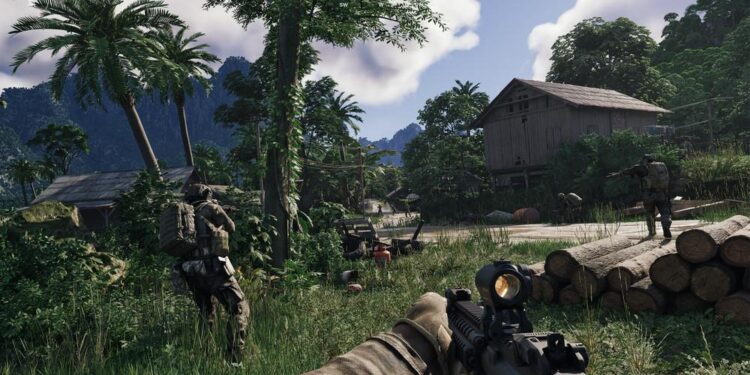Tensions continue to simmer along Europe’s eastern border, where the line between war and peace remains perilously blurred. In a region marked by military posturing, political uncertainty, and fragile ceasefires, nations find themselves navigating a complex gray zone fraught with risk and instability. This evolving landscape challenges traditional definitions of conflict and diplomacy, highlighting the urgent need for vigilance and strategic engagement as the continent grapples with the implications of sustained unrest just beyond its frontier.
The Escalating Ambiguity of Europe’s Eastern Frontier
The delineation between conflict and diplomacy along Europe’s eastern boundary has become increasingly blurred, creating a persistent state of uncertainty for regional actors. Conventional warfare has been replaced by a complex interplay of hybrid tactics including cyber incursions, disinformation campaigns, and covert military maneuvers. This ambiguity challenges traditional defense strategies, forcing countries to adapt to a perilous environment where confrontation is neither overt nor entirely restrained. Policymakers grapple with how to respond without escalating tensions, as each side tests the other’s thresholds under the guise of plausible deniability.
This strategic gray zone fuels instability that extends beyond military considerations, impacting energy security, economic alliances, and public sentiment throughout the region. Key elements defining this ambiguous frontier include:
- Unmarked troop deployments creating uncertainty about official military presence.
- Cyber operations targeting critical infrastructure designed to disrupt without declaration of war.
- Political manipulation aimed at undermining democratic processes and sowing discord.
- Economic pressures and sanctions maintaining leverage without breaking diplomatic channels.
| Aspect | Impact | Response |
|---|---|---|
| Cyber Attacks | Disruption of critical infrastructure | Enhanced cybersecurity measures |
| Hybrid Warfare | Ambiguous military engagements | Increased reconnaissance & intelligence sharing |
| Disinformation | Public mistrust and social polarization | Media literacy campaigns and fact-checking |
Unpacking Hybrid Tactics and Strategic Posturing
In recent years, the interplay of unconventional tactics has redefined conflict dynamics along Europe’s eastern frontier. These methods, situated in the ambiguous space between overt warfare and diplomatic engagement, leverage a combination of cyber operations, disinformation campaigns, and covert military maneuvers. Local populations increasingly find themselves caught in this intricate web, where visibility and attribution remain deliberately obscured to avoid triggering full-scale military responses. The calculated employment of such tactics serves dual purposes: exerting political pressure without escalating to open hostilities, and testing the resilience of Western alliances and security frameworks.
Key elements distinguishing these approaches include:
- Cyber intrusions disrupting critical infrastructure and communication networks
- Propaganda and media manipulation aimed at shaping public perception and sowing discord
- Gradual military posturing involving troop buildups and strategic exercises near border areas
| Tactic | Objective | Visibility |
|---|---|---|
| Cyberattacks | Disrupt critical services | Covert |
| Disinformation | Influence public opinion | Opaque |
| Troop Deployments | Signal strength and intimidation | Visible but deniable |
Policy Pathways for Strengthening Deterrence and Diplomacy
In the face of heightened tensions along Europe’s eastern frontier, policymakers are navigating a complex landscape where traditional deterrence strategies must be recalibrated to address ambiguous threats. Emphasizing a multifaceted approach, Western leaders advocate for enhanced intelligence sharing, robust cyber defense frameworks, and adaptive military postures that deter coercion without escalating conflict. This involves a delicate balance of reinforcing NATO commitments while expanding non-military tools to counter hybrid tactics, including disinformation campaigns and economic pressure.
Furthermore, diplomatic overtures remain central to preventing inadvertent escalation. Constructive engagement channels with Moscow are maintained to manage crisis situations and promote transparency in military activities. Key elements under consideration include:
- Regularized communication hotlines between armed forces to avoid miscalculations
- Confidence-building measures such as joint inspections and transparency reports
- Multilateral forums involving regional actors to discuss security concerns
| Policy Element | Objective | Potential Impact |
|---|---|---|
| Enhanced Cyber Defense | Protect critical infrastructure | Reduced vulnerability to cyber-attacks |
| Diplomatic Hotlines | Reduce miscommunication | Lower risk of accidental escalation |
| Hybrid Threat Intelligence | Identify covert operations | Improved preemptive responses |
In Conclusion
As tensions persist along Europe’s eastern border, the gray zone between war and peace remains a precarious and fluid reality. The delicate balance of power, coupled with ongoing diplomatic efforts and military posturing, continues to shape the region’s uncertain future. Observers and policymakers alike must stay vigilant, recognizing that in this volatile environment, the line separating conflict from stability is anything but clear. Bloomberg will continue to monitor developments closely, providing timely analysis on the evolving dynamics at play.
















